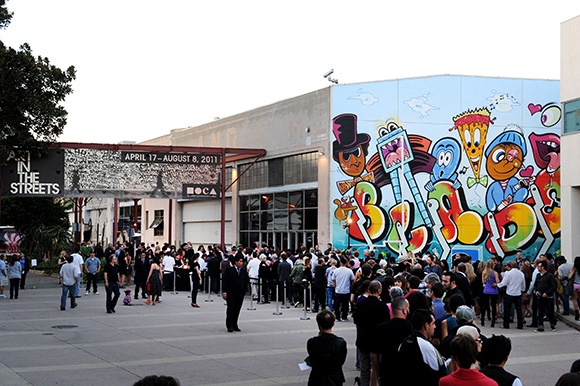Art Should Be Entertainment: Frances Anderton on MOCA and Jeffrey Deitch

In this article for Artbound, KCRW host Frances Anderton wonders why—with the success of the 2010 blockbuster exhibition “Art in the Streets,” and the introduction of celebrity-studded programming curated by James Franco, Mike D of the Beastie Boys, and (coming soon) James Murphy of LCD Soundsystem—MOCA Director Jeffrey Deitch seems to garner nothing but anger and discontent from the Los Angeles art world.
“[Art in the Streets] attracted a record-breaking audience of almost a quarter million in four months. But despite the show’s success, and a breakneck rollout of subsequent shows…anger only intensified at Deitch, an anger so venomous at times it has puzzled people like me, outsiders looking in on the art world. What is going on here, we wonder? Has Deitch touched a nerve that runs deeper than the critiques of his unorthodox management style…[and] committed a cardinal sin of treating art as if it should be “entertainment?”
“Even though much art seems intended to entertain – just consider at nearby LACMA Chris Burden’s overtly entertaining Metropolis II, for example, or Michael Heizer’s Levitated Mass, whose journey from Riverside became itself an “event”—it does so from a place of conversation within the canon. Such artists have paid their dues, they have fine art degrees, the imprimatur of art critics, and are integrated into the art economy; their work comes steeped in an underlying philosophy and a place in the art continuum that separates it from pure spectacle, pure commerce, pure entertainment.
Whereas at MOCA, we are seeing entertaining art interlopers mixing it up with the canon: graffiti writers, fashion designers, actor-artists, architects and musicians; and maybe, heaven forbid, the talents of every stripe whose work emerged from the Disco era (now why is that not a fabulous theme for an art show?). The result of this creative fusion? The museum, especially the Geffen, has expanded its art-viewing audience while evolving into more of a social space, becoming a place ‘where the crowds are.'”